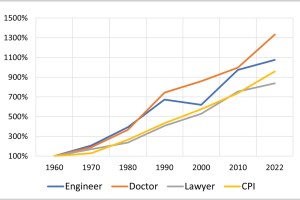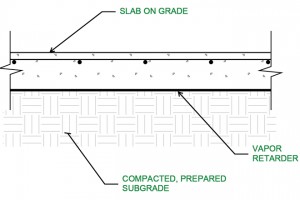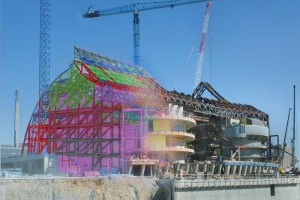A robust post-pandemic job market has triggered a high demand for design and construction expertise. In addition, an influx of federal funding further heightens demand.
…Review Category : CASE Business Practices
Structural engineers charged with designing a structure depend upon the input of geotechnical engineers to determine the appropriate foundation type for a particular site and building design. Although both are critical team members on a project, the geotechnical engineer and structural engineer may be engaged through different processes, and each may have different clients though parallel responsibilities.
…Structural Slab on Void Forms vs. Conventional, Soil-Supported Slab on Grade
In expansive soil regions, the Geotechnical Engineer for a project usually provides recommendations for grade-level floor construction – structural slab on void forms or conventional slab on grade – based on the existing subgrade properties, excavation depth, and compaction of select fill. The Structural Engineer of Record (SER) then provides a comparative study of both options. Conventional slab on grade is generally a thinner, lightly reinforced slab requiring excavation and replacement of subgrade with a select fill but is subjected to movements as the existing subgrade heaves. In contrast, the structural slab on void form option often requires a thicker, heavily reinforced slab spanning between larger column foundations and other intermediate foundations but without undercutting or removing the existing soil. The void forms allow for placement of wet weight of concrete during construction but absorb ground moisture gradually and lose strength after the concrete has set, thus creating a gap under the slab to allow for soil movements. The final decision by the owners is usually based on the comparison of the initial construction cost of each option without fully understanding the short- and long-term consequences.
…If you are a practicing structural engineer, you have no doubt come across various forms of contracts outlining the terms of your agreements. These contracts may be with parties that engaged your services or from whom you sought services. You may have your own contract composed by your legal counsel. More likely, your contract is based on a template created by an organization that develops and periodically updates standard contracts. This article provides a brief overview of the types of contracts you may encounter and contract offerings available from several respected sources.
…As structural engineers, at the end of the design phase, our work product consists of the construction documents (drawings and specifications), which detail the requirements to construct a given structure to serve an intended purpose. The degree to which the project will be considered a success is directly related to the quality of the construction documents. The documents must be complete, coordinated, clear, concise, and constructible. Poor quality construction documents lead to significantly more time, frustration, and potential liability when issues need to be corrected during shop drawings or, worse, during or even after construction. Building structures today are more complicated than ever, and a successful project involves proactive management of both the technical and administrative sides of the project.
…CASE has recently updated CASE 962-D: A Guideline Addressing Coordination and Completeness of Structural Construction Documents. It remains one of the most popular publications, and for a good reason. The AEC industry continues to identify the lack of quality of structural drawings as a significant issue, even as we approach 20 years since 962-D was created.
…Business Practice Tips for the Structural Engineer
Long before Cheryl’s “she-shed” was struck by lightning… my shed was destroyed by a rotted oak tree blown over during Hurricane Irene. My home and office were without power for several days. All the while, calls were coming in from clients to evaluate the damage to their buildings. Although I had been engineering structures in flood zones for many years by then, when you are personally and professionally affected by storm damage, it makes a lasting impact. …










